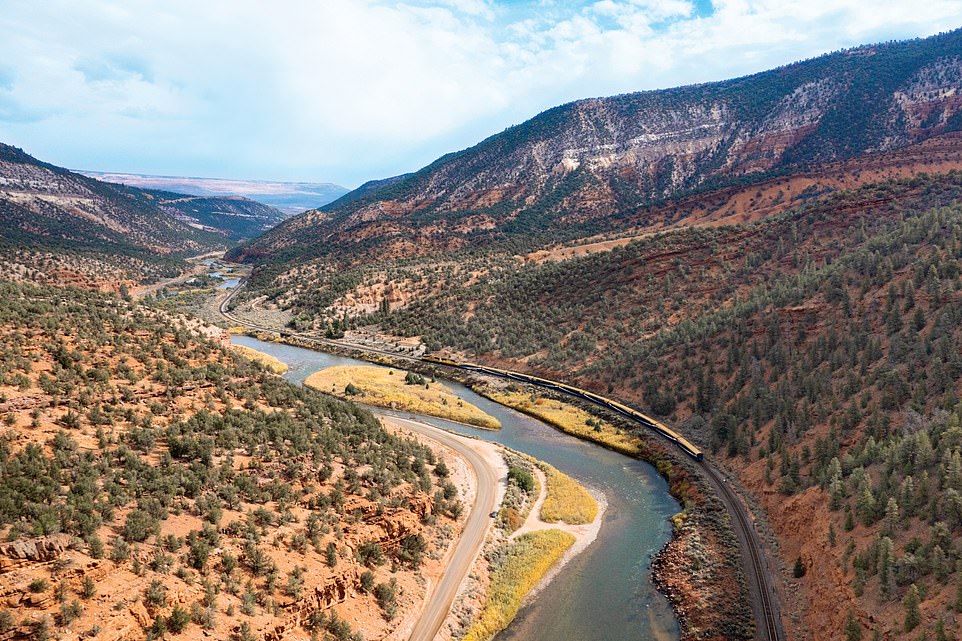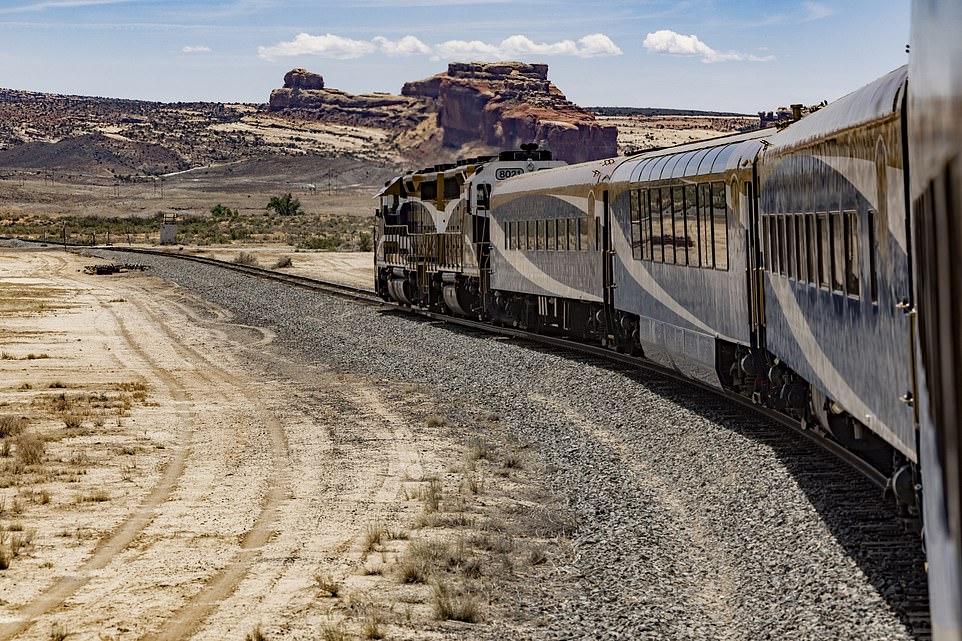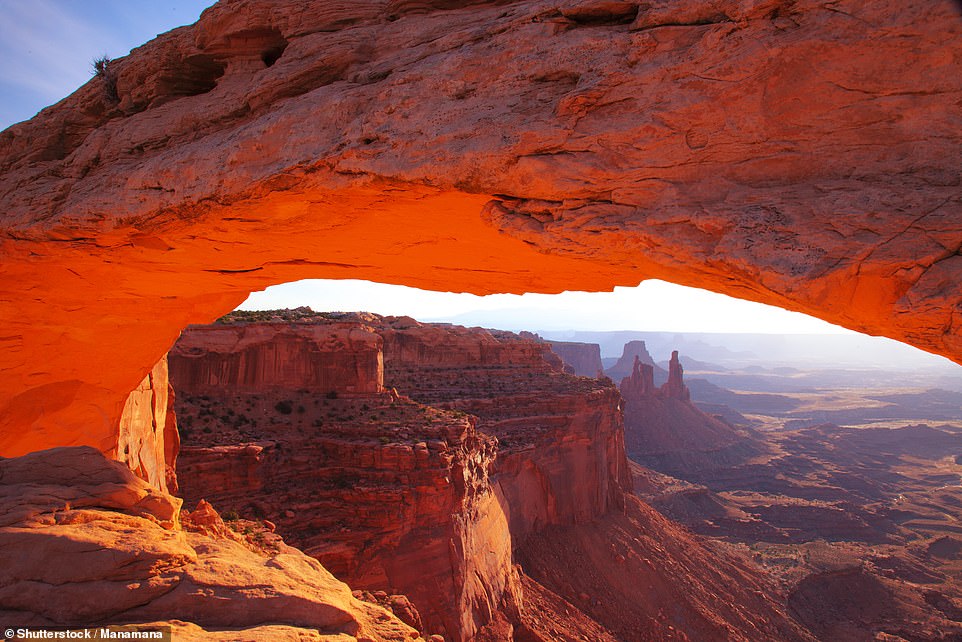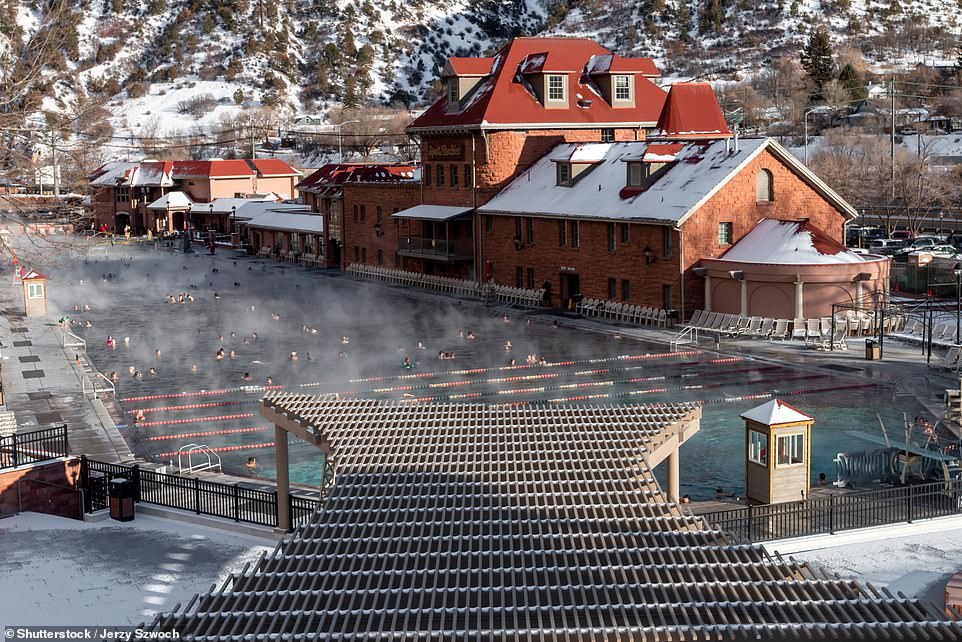Free-flowing drinks and majestic views of the American Rockies: Is this the most spectacular train ride in the world?
It’s not the most conventional hello.
On a boat on the Colorado River, a fisherman waves at us, then turns around and pulls down his pants to expose his (rather large) behind.
“We call this Moon River,” our train conductor laughs, explaining that this unusual act is considered a good-natured joke. We received what the train crew calls the “Colorado salute.”
Welcome to a journey from Denver, the capital of Colorado, to the city of Moab, Utah, aboard one of America’s most spectacular train rides: the Rocky Mountaineer.
The 370-mile journey takes you through the Rocky Mountains, with bald eagles flying above and deer darting along the tracks. You’ll rise from desert prairies and soon wind between jagged, snow-capped peaks and through vast, red-hued canyons.
Cowboyland: Tom Chesshyre experiences Rocky Mountaineer’s first U.S. train route. Above, the train passes through Colorado’s Beque Canyon as it heads toward Utah

“As you ascend from desert prairies you quickly wind between jagged, snow-capped peaks and through vast, red-colored canyons,” writes Tom
Rocky Mountaineer trains started operating in Canada in 1990, running between Vancouver, Jasper, Banff and Calgary – and the lavish trains, with gourmet meals and smartly dressed staff, proved such a success that the railway company left with an American route two years ago.
The American trips take place between mid-April and October, including an overnight stay in the intriguing town of Glenwood Springs, Colorado, where Wild West gunfight legend Doc Holliday died in 1887.
It makes for one of the best train rides in the world (let alone just in the US). And it’s not just the landscape that is attractive.
There’s a lively camaraderie on board, which may have something to do with the free-flowing drinks in the SilverLeaf Plus lounge, where tunes by Fats Waller and George Gershwin play on the automatic piano.
“Isn’t this just wonderful?” says Sam from Vancouver, who brings me a martini and tells me about the novel he is writing about the old Wild West.
Debbie, who accompanies us – also with a martini in hand – is in a dreamy mood as we enter yet another canyon: “I just love this ride.”

Rocky Mountaineer trains began operating in Canada in 1990, running between Vancouver, Jasper, Banff and Calgary – and the lavish trains, with gourmet meals and smartly dressed staff, proved such a success that the railway company left two years ago with an American route

The train ends its journey in Moab, Utah, home to Canyonlands National Park (photo)
The staff provides commentary from time to time as the train moves along. The line we are on, we learn, was built in the 1880s to connect Denver and Salt Lake City.
At some point we cross the Continental Divide, where water flows east into the Gulf of Florida or west into the Pacific Ocean.
The tracks are managed by Union Pacific, which decides when trains are given priority on the sometimes single-line railway.
Occasionally we go to sidings to allow Amtrak’s California Zephyr service to pass.

The trip includes an overnight stay in the Colorado town of Glenwood Springs (pictured), where Wild West gunfight legend Doc Holliday died in 1887.
The top speed is 100 km/h, while the average speed is 35 km/h. After our night out in Glenwood Springs – with modern cowboys in old-fashioned taverns and steaming hot springs (hence the name) – we trudge through even more beautiful canyons the next morning.
Small settlements with names like Silt, Rifle and No Name come and go. It really feels like the back of beyond.
After decommissioning old uranium mines, we slowly move to the edge of Moab, where the delights of Arches and Canyonlands National Parks await: a fantastic red rock landscape with plateaus, canyons and spire-shaped formations as far as the eye can see.
The Rocky Mountaineer lived up to its name – gloriously – from start to finish.
